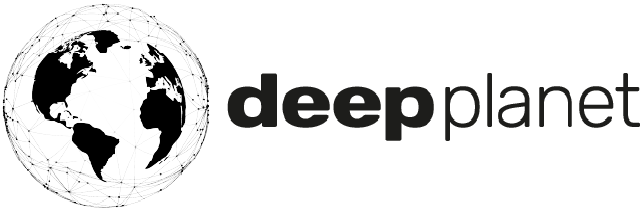Leveraging AI and satellite imagery for Soil Nitrogen Forecasting
Soil nitrogen is a crucial nutrient in agricultural ecosystems, influencing plant growth, soil fertility, and environmental sustainability. Accurate forecasting of soil nitrogen content is important for optimising agricultural practices, enhancing crop yields, and minimising environmental impacts such as nitrogen leaching and greenhouse gas emissions.
There has been a lot of research over the years in academia and industry on good crop management practices. This research is usually consolidated in the farmer manuals, such as DEFRA’s “A Code of Good Agricultural Practice for farmers, growers and land managers“. Such manuals provide suggested plans for nutrient management, soil testing and so on. DEFRA’s recommendations advise regular soil analysis: ideally, this should be done every 3 to 5 years to set and maintain a correct fertiliser policy, or whenever a major change of land use is proposed. This is usually done as part of a nutrient management plan. However, to construct a detailed management plan, farmers need to conduct detailed land analysis, taking soil probes from the agricultural field. At the same time, farmers want to have an understanding of the results of the introduction of a new fertiliser application plan as soon as possible after the changes have been made. Taking probes is an expensive and laborious practice and the solution to this problem might be regular monitoring of the fields with satellite or aerial imagery.
The role of AI and remote sensing
In recent years, the integration of remote sensing technology has revolutionised the field of agricultural monitoring and environmental management (Tuia, 2023). Multi-sensor remote sensing, involving data from various satellite sensors, offers a comprehensive approach to soil analysis. These sensors, which include optical, thermal, and microwave instruments, provide a broad spectrum of features that can be combined to give a more complete picture of soil conditions. For instance, optical sensors like Landsat capture high-resolution images that are useful for assessing vegetation cover and land use patterns, indirectly indicating soil nitrogen levels. Microwave sensors, such as those on Sentinel-1, effectively capture soil moisture content, a parameter closely related to soil nitrogen availability (Zhang et al., 2023). Sentinel-2, with its multispectral capabilities, further enhances this analysis by providing detailed information on vegetation health and soil characteristics (Zhou et al., 2023).
Our approach
Deep Planet has conducted a study to estimate the feasibility of using AI algorithms to estimate soil nutrients with satellite imagery. This work included using publicly available data to understand nitrogen content in the soil with satellite imagery. We used publicly available data, such as digital elevation maps, including terrain attributes, such as the slopes, aspects, elevations (COPERNICUS/USGS); annual statistical features of soil temperature, runoff, surface net solar radiation, evaporation, precipitation, etc. (ERA5-Land Daily Aggregated data); freely available satellite imagery (Landsat-8); the annual statistics on surface temperature (MODIS); monthly mean of single polarisation values (Sentinel-1); annual rainfall statistics (CHIRPS Daily) and information about soil composition (sand, clay and texture from OpenLandMap).
We evaluated four state-of-the-art ML models for the estimation of soil nitrogen from satellite imagery and terrain and climatic features: CatBoost, LightGBM, XGBoost and ExtraTrees regressor models. The CatBoost model demonstrated exceptional performance, particularly in terms of accuracy in soil nitrogen estimation with the prediction error under 4%, highlighting the potential of combining remote sensing data with machine learning in environmental analysis.
This method can help farmers perform regular, cost-effective nitrogen monitoring on their land without taking regular soil measurements. The management implications of this research include lower costs, better decision-making and the potential to scale successful management of soil monitoring practices without a cost increase.
References:
F.A. Diaz-Gonzalez, J. Vuelvas, C.A. Correa, V.E. Vallejo, and D. Patino, “Machine learning and remote sensing techniques applied to estimate soil indicators–review,” Ecological Indicators, vol. 135, 2022.
D. Tuia, K. Schindler, B. Demir, G. Camps-Valls, X.X. Zhu, M. Kochupillai, S. Dˇzeroski, J.N. van Rijn, H.H. Hoos, F. Del Frate, and M. Datcu, “Artificial intelligence to advance earth observation: a perspective,” arXiv preprint arXiv:2305.08413, 2023.
Q. Zhang, M. Liu, Y. Zhang, D. Mao, et al., “Comparison of machine learning methods for predicting soil total nitrogen content using Landsat-8, Sentinel-1, and Sentinel-2 images,” Remote Sensing, vol. 15, no. 11, 2023.
T. Zhou, Y. Geng, W. Lv, S. Xiao, P. Zhang, et al., “National-scale spatial prediction of soil organic carbon and total nitrogen using long-term optical and microwave satellite observations in Google Earth Engine,” Computers and Electronics in Agriculture, vol. 210, 2023.
DEFRA (2009) Protecting our Water, Soil and Air. A Code of Good Agricultural Practice for farmers, growers and land managers.

